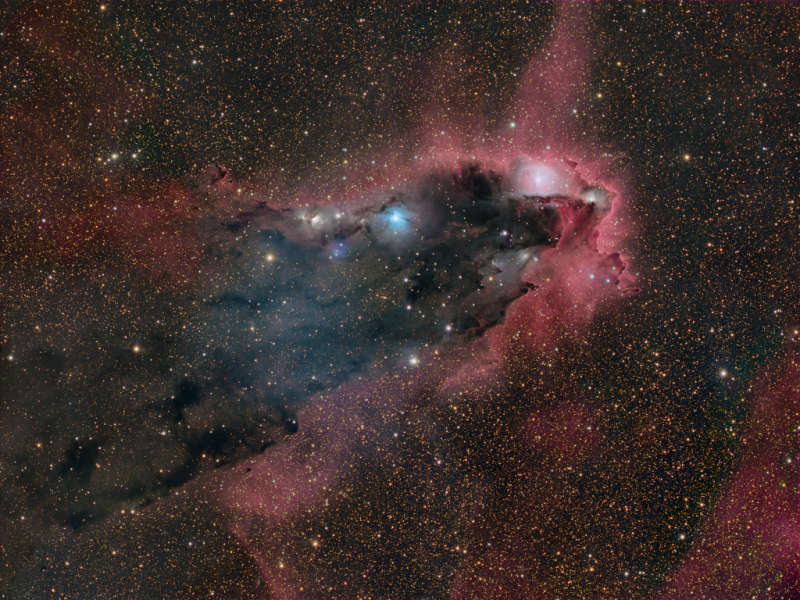
|
Credit & Copyright: Mike Selby
Explanation:
In silhouette against a crowded star field
along the tail of the arachnological constellation
Scorpius,
this dusty cosmic cloud evokes for some the image of an
ominous
dark tower.
In fact, monstrous clumps of dust and molecular gas
collapsing
to form stars may well lurk within the dark nebula,
a structure that spans almost 40 light-years across this
gorgeous
telescopic portrait.
A
cometary globule, the swept-back cloud
is shaped by intense ultraviolet radiation from the
OB association
of very
hot stars in
NGC 6231,
off the upper right corner of the scene.
That energetic ultraviolet light also powers the globule's bordering
reddish glow of hydrogen gas.
Hot stars embedded in the dust can be seen as bluish
reflection nebulae.
This dark tower and
associated nebulae are about 5,000 light-years away.
Growing Gallery:
Moon Eclipses
Saturn in August 2024
|
January February March April May June July August September October November December |
| ||||||||||||||||||||||||||||||||||||||||||||||||
NASA Web Site Statements, Warnings, and Disclaimers
NASA Official: Jay Norris. Specific rights apply.
A service of: LHEA at NASA / GSFC
& Michigan Tech. U.
Based on Astronomy Picture
Of the Day
Publications with keywords: Scorpius - dark nebula
Publications with words: Scorpius - dark nebula
See also:
- APOD: 2025 November 19 Á Chamaeleon Dark Nebulas
- IC 348 and Barnard 3
- APOD: 2024 October 27 Á LDN 43: The Cosmic Bat Nebula
- APOD: 2024 July 22 Á Chamaeleon Dark Nebulas
- APOD: 2024 June 25 Á The Dark Doodad Nebula
- APOD: 2023 November 27 Á LBN 86: The Eagle Ray Nebula
- APOD: 2023 November 20 Á The Horsehead Nebula
